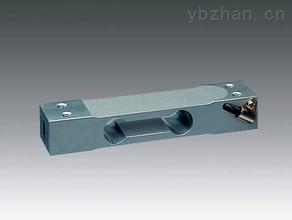Non-electrical physical quantities such as displacement, force, pressure, acceleration, and torque are converted into sensors that change resistance. It mainly includes resistance strain sensors, potentiometer sensors (see displacement sensors) and manganese copper piezoresistive sensors. Measuring instruments such as force measuring, pressure measuring, weighing, measuring displacement, acceleration and torque composed of resistance sensors and corresponding measuring circuits are automatically weighed by metallurgy, electric power, traffic, petrochemical, commercial, biomedical and defense departments, etc. One of the indispensable tools for process inspection and automation of production processes. [1]

Structure: It consists of two basic parts: resistor element and brush (moving contact). The movement of the brush with respect to the resistive element may be a linear motion, a rotary motion and a helical motion, so that the linear displacement or the angular displacement may be converted into a resistance or a voltage output with a certain function relation therewith.
Potentiometer structure and material
(1) Resistance wire: Constantan wire, platinum-iridium alloy and kamax, etc.
(2) Brush: Commonly used silver, platinum crucible, platinum crucible and other metals
(3) Skeleton: Commonly-used materials are ceramic, phenolic resin, cloth bakelite, and other insulating materials. The skeleton has many structural forms and is often rectangular.
Measuring instruments such as force measuring, pressure measuring, weighing, measuring displacement, acceleration and torque composed of resistance sensors and corresponding measuring circuits are automatically weighed by metallurgy, electric power, traffic, petrochemical, commercial, biomedical and defense departments, etc. One of the indispensable tools for process inspection and automation of production processes. [2]
Resistive sensors have the advantages of simple structure, high output precision, good linearity and stability. However, it is greatly affected by environmental conditions such as temperature and the like, and has insufficient resolution and inadequacies.
A potentiometer-type sensor is a sensing element that converts the mechanical line displacement or angular displacement input into a resistance or voltage output that is a function of it. A certain function of the resistance or voltage output of the sensing element.
The working principle of the strain gauge sensor is based on the resistance strain effect, that is, when the conductor is mechanically deformed, its resistance value changes accordingly.
Gas- and moisture-resistance sensors are resistance sensors that detect specific components of a gas or water vapor that causes a change in the resistance of a semiconductor. [3]
Reference editing area
Plain Poly Mailers,Parcel Bags,Express Packing Bag,Plain White Mailing Bags
Dongguan Pasike Packaging Co., Ltd. , https://www.dgpasike.com